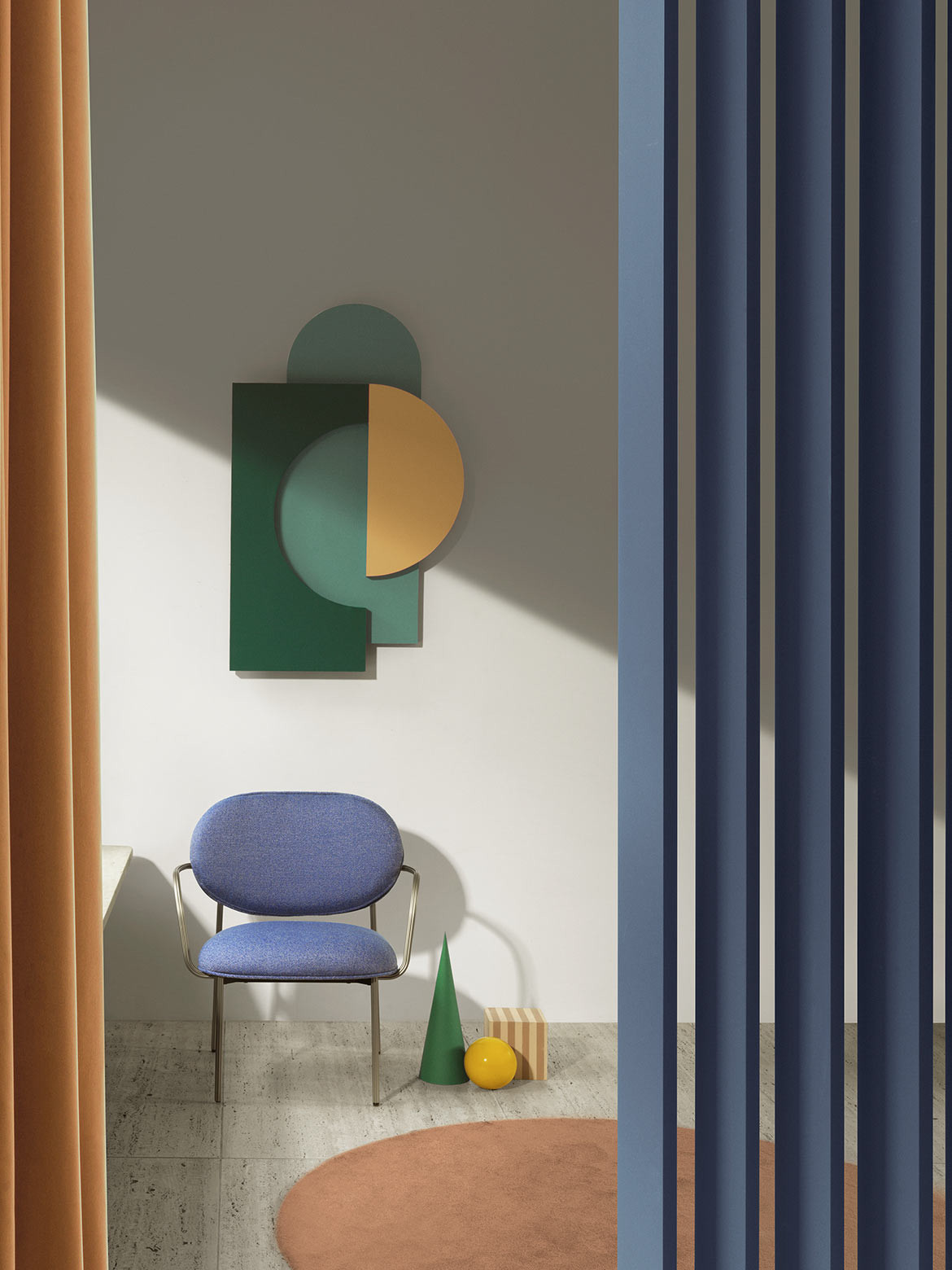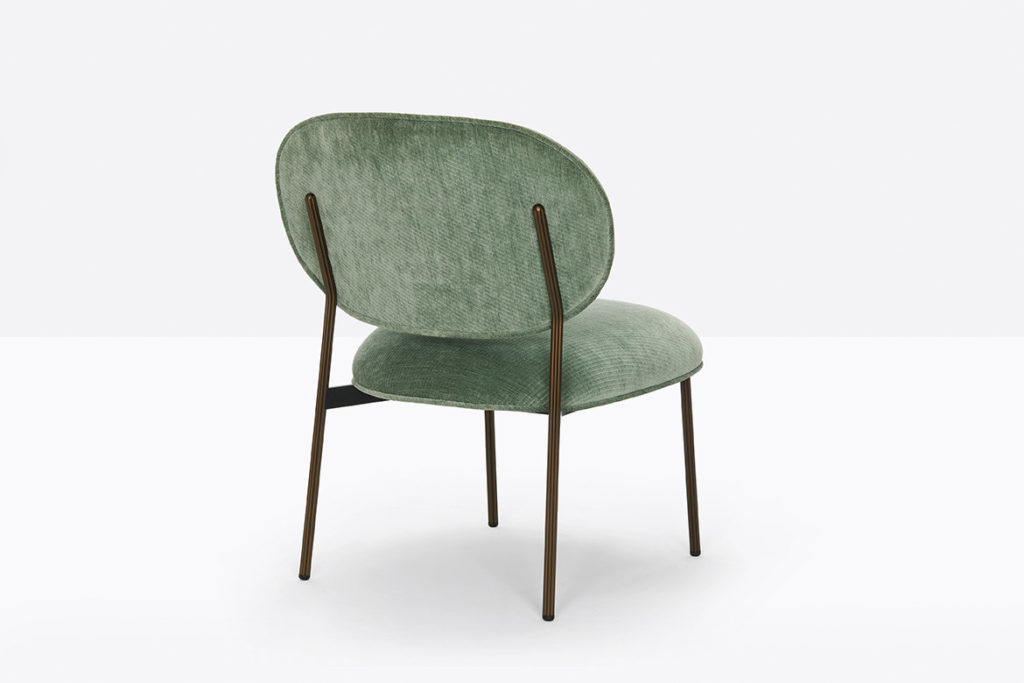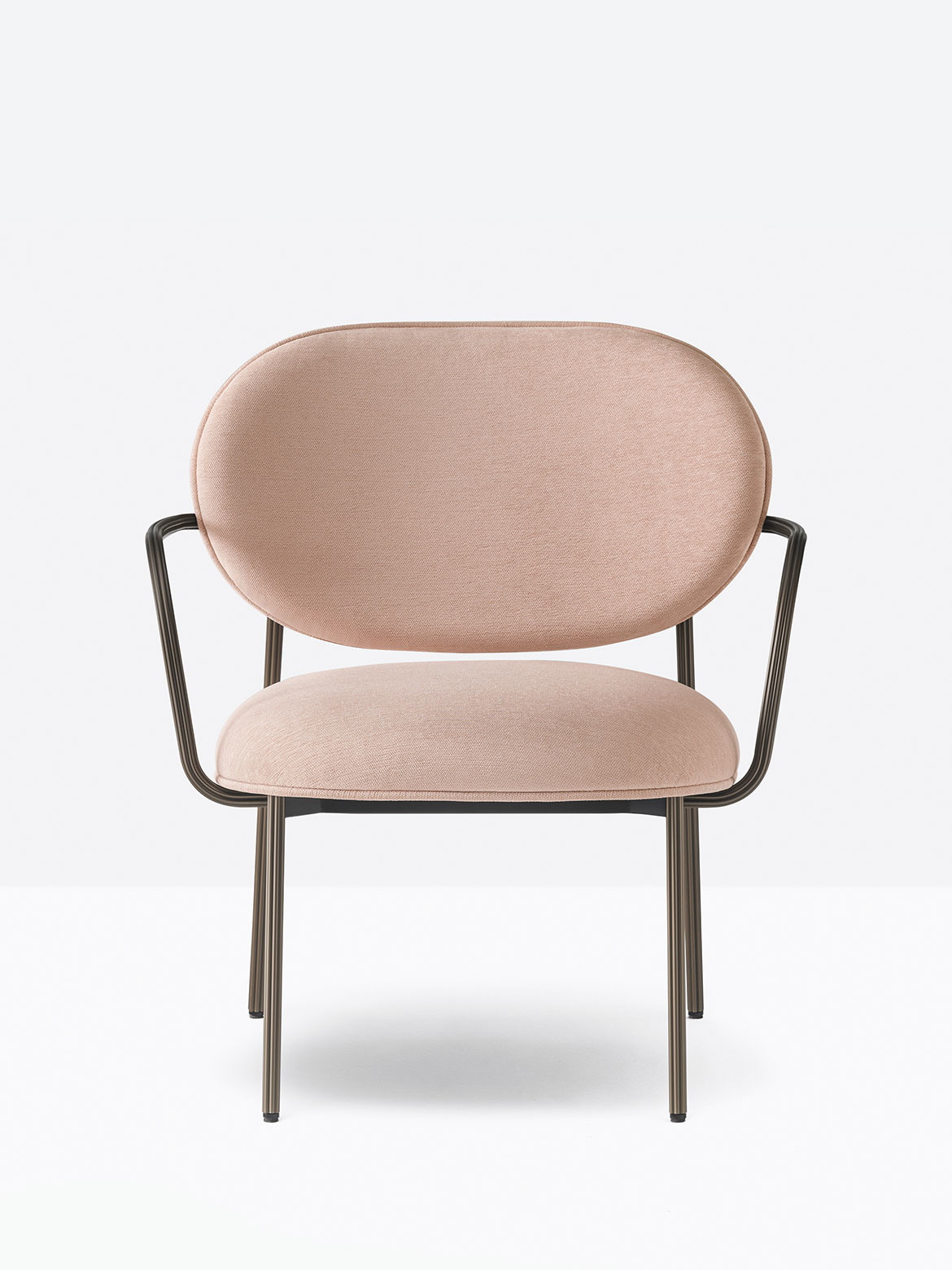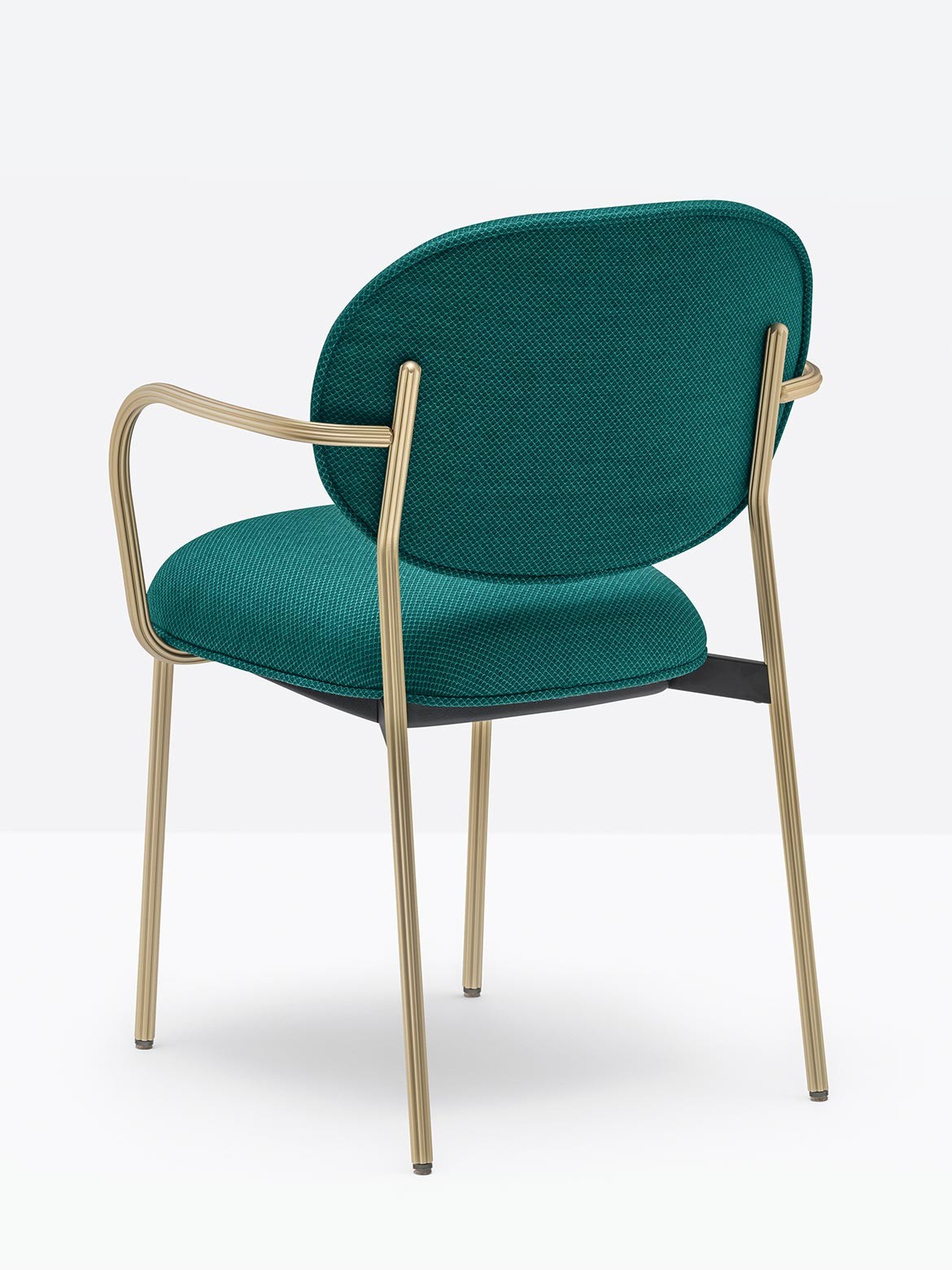In this intimate chat with Sebastian Herkner, German designer of international renown, we learn about his love for camping, the craftsmanship essential to his work, and his Blume collection for Pedrali.

April 7th, 2022
The accomplished visionary behind the Blume collection for Pedrali – and the recipient of the 2021 EDIDA award for Best Designer of the Year, the most prestigious design award in Milan – is smiling at me warmly from a computer screen. Behind him, rows of brown boxes are stacked up against a glass wall, and deeper into the background, an expanse of a warehouse-like space extends for metres on end.
It’s a new studio Sebastian Herkner and his team moved into only a couple of weeks ago after 15 years at another address just around the corner. “For the first time, I have my own studio space,” Sebastian says, pleased about the atelier in Offenbach Am Main, near Frankfurt.
But when I ask him about how he got to become a designer in the first place, we leave the city. Sebastian takes me to the German countryside – and back in time.

“I grew up in a small village with my parents and an older brother. We didn’t have a computer at home – and only three TV programmes,” he says with a smile, and without regret. ”We spent a lot of time outside, running around the forest, building tree houses. I was already really interested in craft and creating fantasy worlds. Later, that became my profession.”
Sebastian adds that even as a young man, he wandered local flea markets in the search of furniture to repair.
His desire to create, affinity for tactile experiences, and intuitive drive to interact with objects was naturally nurtured in his household, where appreciation of craft was an important part of everyday life – and experiences which, while seemingly boring at the time, Sebastian explains, had an immense influence on his design sensibility.
“We camped around Europe a lot, all the way from Norway to France,” he says. “On these trips we would often visit churches, glove and lace shops, which my mother loves. At the time, it didn’t seem that interesting to me. My friends were going to Thailand and having fun, and there I was – visiting 15 churches in one week,” Sebastian laughs. “But now I think it was aesthetic training. I can appreciate the architecture, the beautiful shop windows, and the purity of objects. I think that really reinforced my interest in craft.”
Appreciation of craft, detail and the finer things has undoubtedly informed his design practice – and the Blume collection is an apt expression of his workshop in that respect. Designed with Pedrali, Blume’s sophisticated profile was inspired by – and named after – the form of a flower.
With Pedrali’s incredible legacy where chair design is concerned, Sebastian wanted to design a seat that would work in a contract and residential environment with particular focus on hospitality, meeting rooms and audience spaces.

That’s how the original Blume lounge and dining chairs came to be. The seats – a taller and stackable Blume 2950, and a more robust Blume 2951 – introduced the clean, refined, yet decorative profile that fuses versatility, comfort and sophistication – all anchored by the chairs’ unique, extruded aluminium base.
“For me, it was really about the structure of the chair, its legs,” explains Sebastian. “Normally designers use a standard tube in different diameters. But I wanted to do something sexy, and that’s how the flower profile was born.”

The delicate yet striking aluminium profile structurally grounds the chairs’ round, welcoming and soft fullness, resulting in an incredibly elegant, yet not intimidating form. The outcome of the process of anodisation, the refined legs come in a range of thoughtfully created colours ranging from black and silver to brush gold – and are accompanied by an impressive selection of fabrics.
“I think colours and materials are so important because they can completely change the character of the product,” Sebastian says. “I think that it makes it particularly for interior architects, because it allows them to customise the product. Blume has a huge potential in this, particularly because Pedrali can provide different variations and bespoke options.”
Related: Sebastian Herkner’s design cure for an identity crisis

The potential of the collection – which also features a diverse selection of coffee tables that boast the same, refined aluminium leg profile protruding from around their elegant tops – has been further increased by the addition of armchairs with armrests – Blume 2959 and 2955.


Launched in 2021, these particular designs took longer to produce. “It’s a challenge to bend the tube, particularly as we wanted to retain the flower profile,” Sebastian explains the challenge behind ensuring the decorative detailing could seamlessly follow the curvature of the armrests, enhancing the chair’s unique and instantly recognisable silhouettes.
“You need to really investigate the mould and the bending, so that the structure of the flower isn’t destroyed during the process.”


Pedrali’s unique fusion of passion and technical expertise were instrumental in fulfilling Sebastian’s meticulous vision. “Pedrali invests so much in mould, and has such incredible engineering capability. For me, it was wonderful to design Blume with them,” the designer puts emphasis on the word “with.”
“It’s a collaboration because I have the vision and idea, but then it’s the craftspeople and engineers on the other side who bring it to life,” Sebastian says. “It’s really the people behind the scenes, the craftsmen who wake up at six or five o’clock in the morning to go to the workshop to put all their passion, work, energy and knowledge into a product.”
In speaking of the importance of the artisans, Sebastian points to the fact that in the Blume collection designs fixtures are hidden away. “You couldn’t weld or glue the structural elements – they had to be screwed together. But this wonderful older gentleman from the engineering team found an incredible solution which sees all of the screws concealed. For a designer, it’s really amazing to work with a company that has this kind of potential – and people who are really interested in finding solutions.”

Sebastian’s work has always been genuinely driven by the interactions with the craftspeople. “Before COVID I was spending 150 days a year travelling – from Zimbabwe, to Colombia and Japan – to really discover and understand local craft, meet people in workshops and learn about their techniques.”
This drive to interact, observe and learn is matched by Sebastian’s desire to connect, and establish shared values – whether it’s the approach to design, social responsibility or environmental awareness. It’s precisely the kind of connection he’s found with Pedrali. “They’re Incredibly down to earth,” he says. “And they produce everything in-house, which is fantastic from a sustainability point of view.”
It’s one of the reasons the designer wants to expand the Blume range further. “With Pedrali we are working on something new, which will be launched in June in Milan,” he announces with excitement.

“It’s wonderful when a company offers the opportunity to grow a product family,” Sebastian says. “Many brands just want to pursue novelty every year. But creating a family, growing it, revitalising it makes people remember it more. Especially if you have a partner that you design the product with – it makes it more successful.”
There is no doubt that the Blume collection has been both successful and – like a forget-me-not of the design world – incredibly memorable. And with its innate finesse, the utmost attention to detail that serves as a testament to the incredible craft at the heart of it, its inviting robustness and architectural versatility, Blume is bound to make any interior flourish.
The range – including the latest addition of the collection – is available in Australia with Pedrali.
We think you might like this article about The Coach House, a luxe cottage retreat featuring Pedrali.
A searchable and comprehensive guide for specifying leading products and their suppliers
Keep up to date with the latest and greatest from our industry BFF's!

Marylou Cafaro’s first trendjournal sparked a powerful, decades-long movement in joinery designs and finishes which eventually saw Australian design develop its independence and characteristic style. Now, polytec offers all-new insights into the future of Australian design.

Sub-Zero and Wolf’s prestigious Kitchen Design Contest (KDC) has celebrated the very best in kitchen innovation and aesthetics for three decades now. Recognising premier kitchen design professionals from around the globe, the KDC facilitates innovation, style and functionality that pushes boundaries.

Savage Design’s approach to understanding the relationship between design concepts and user experience, particularly with metalwork, transcends traditional boundaries, blending timeless craftsmanship with digital innovation to create enduring elegance in objects, furnishings, and door furniture.

With Milan 2024 only a few weeks away, we sneak a view of some of the most exciting pieces set to go on show – from lighting design to furniture, here are nine preview products.

Milanese artisan Henry Timi celebrates natural materials through strikingly reduced geometric forms, creating a stripped-back vision of interior luxury.
The internet never sleeps! Here's the stuff you might have missed

Salone del Mobile 2024 is only a few weeks away, so we’re highlighting here seven special events, spaces and installations that we’re certainly planning to check out.

Drawing on the concept of a watering hole as a gathering place in nature, GroupGSA has rejuvenated Sydney Water’s headquarters located in Parramatta.